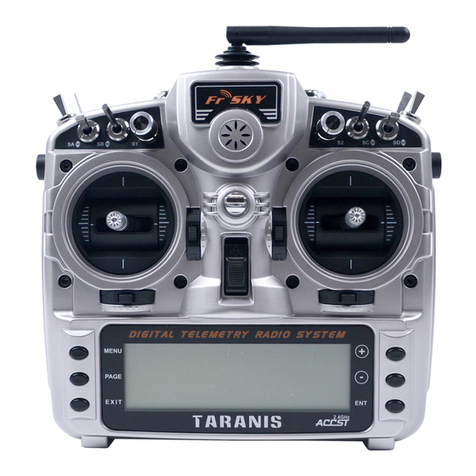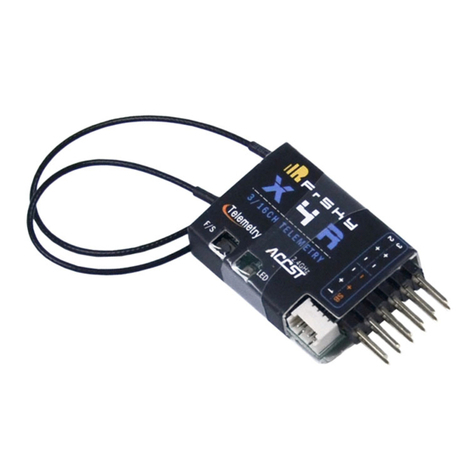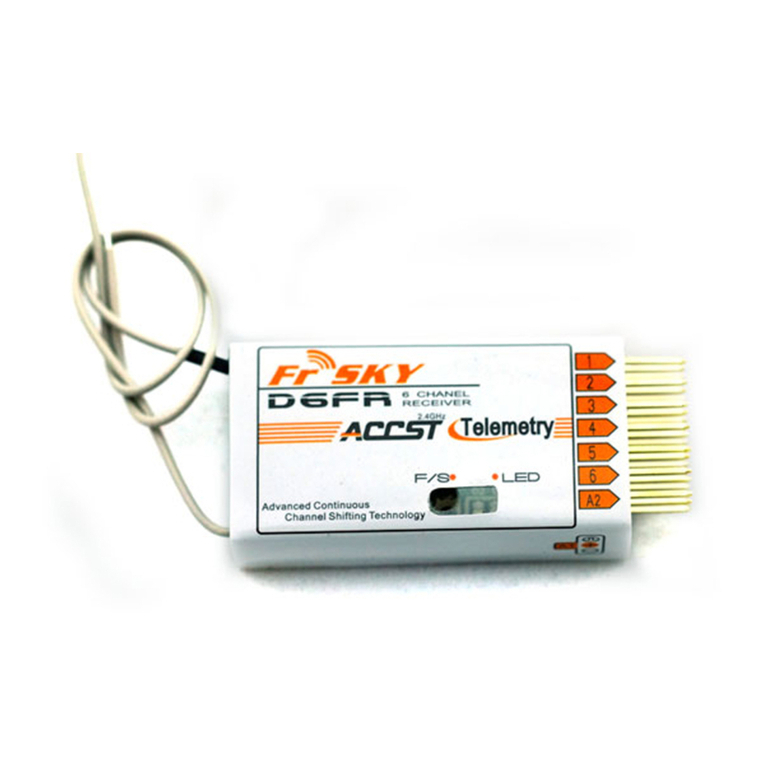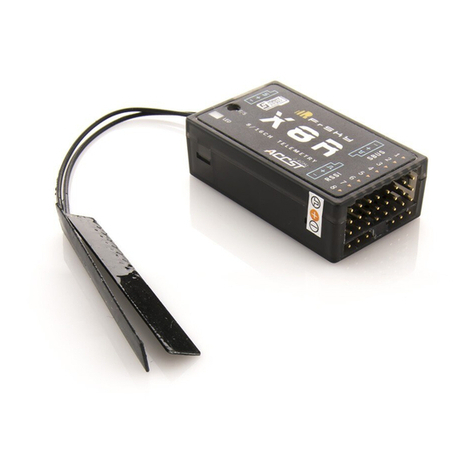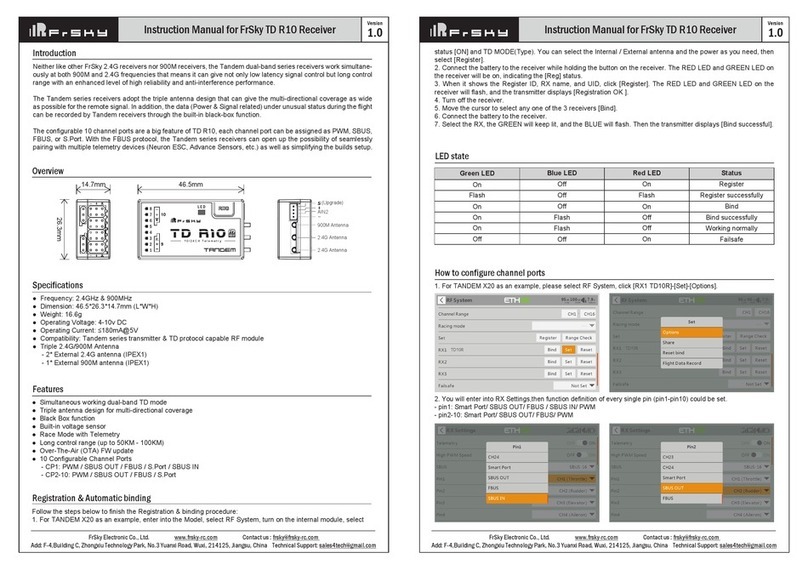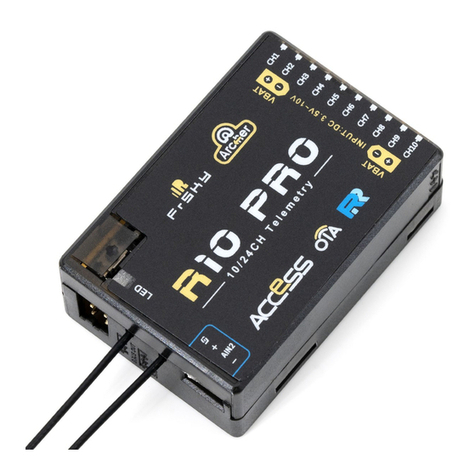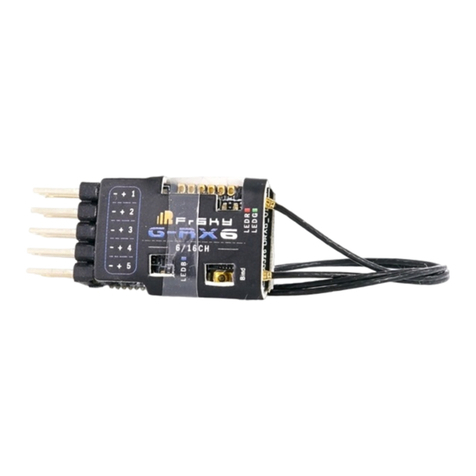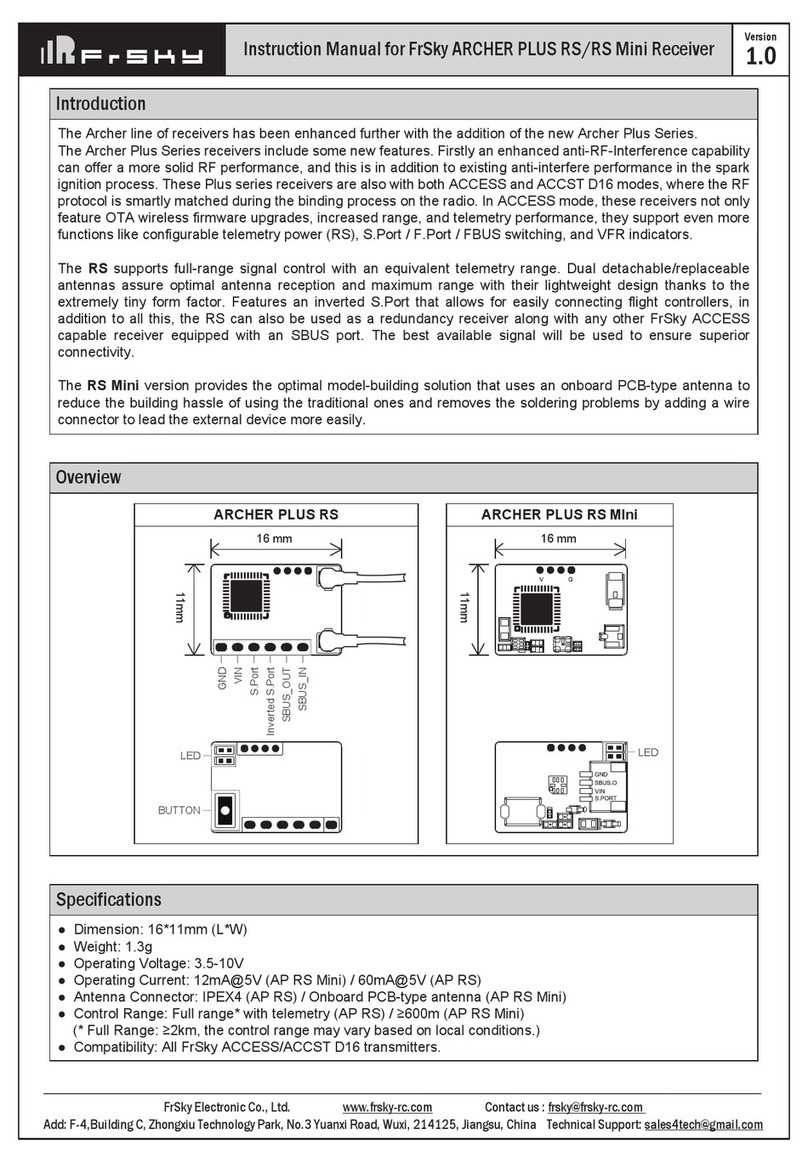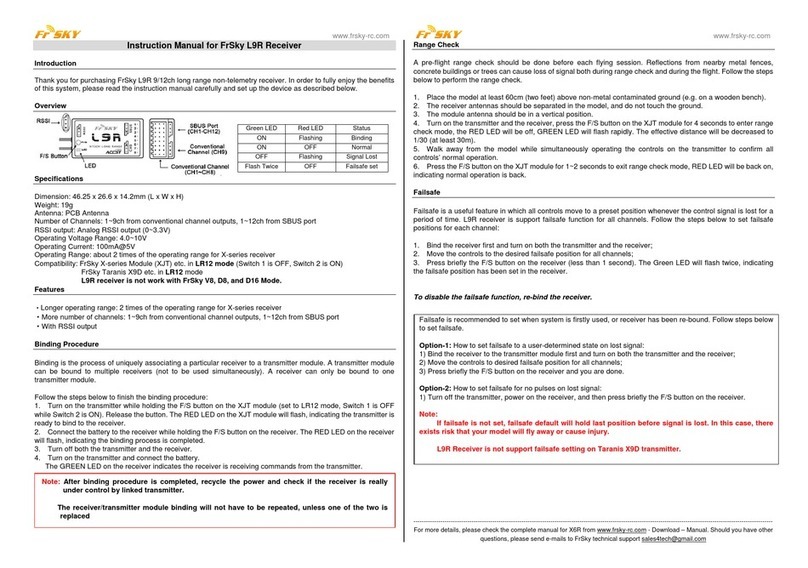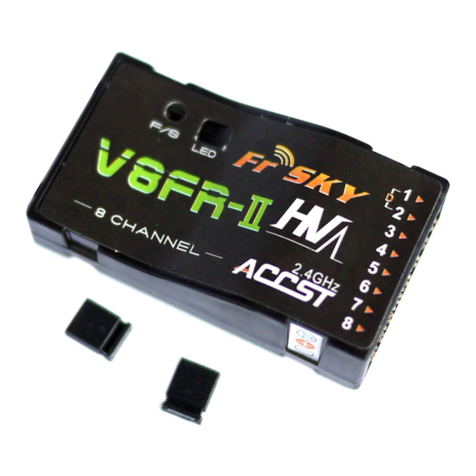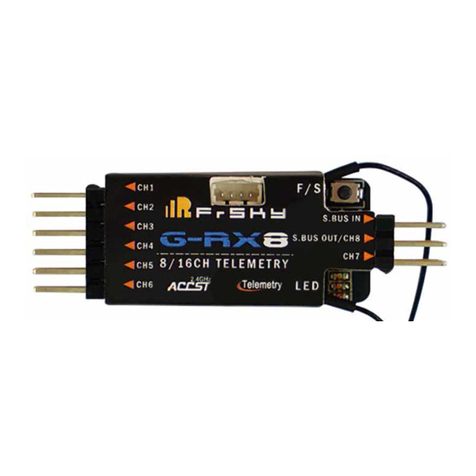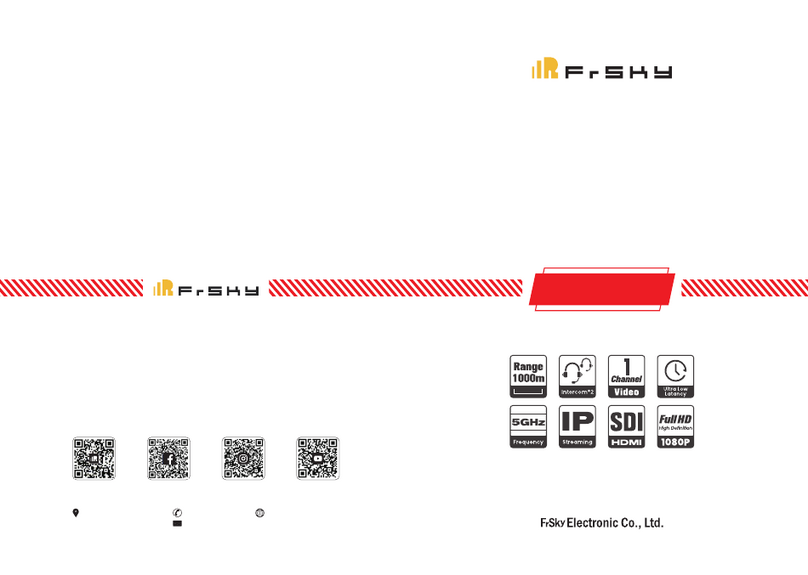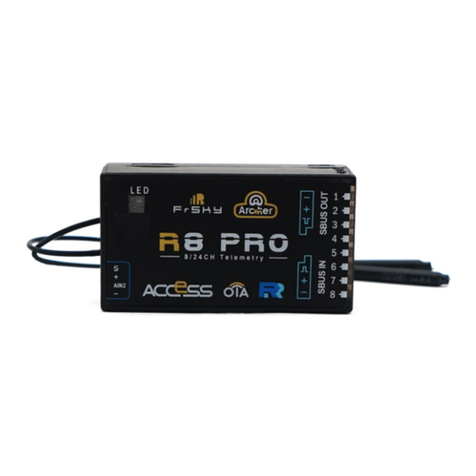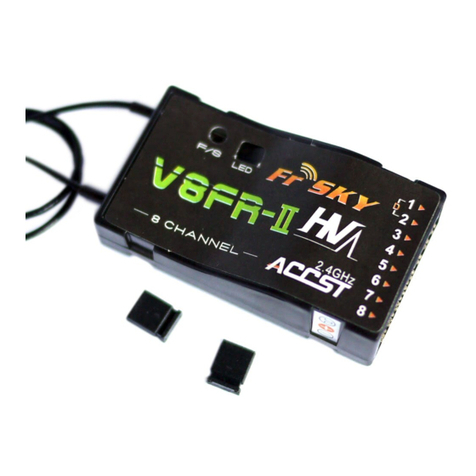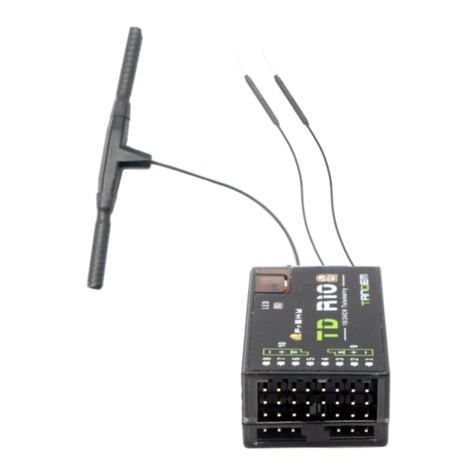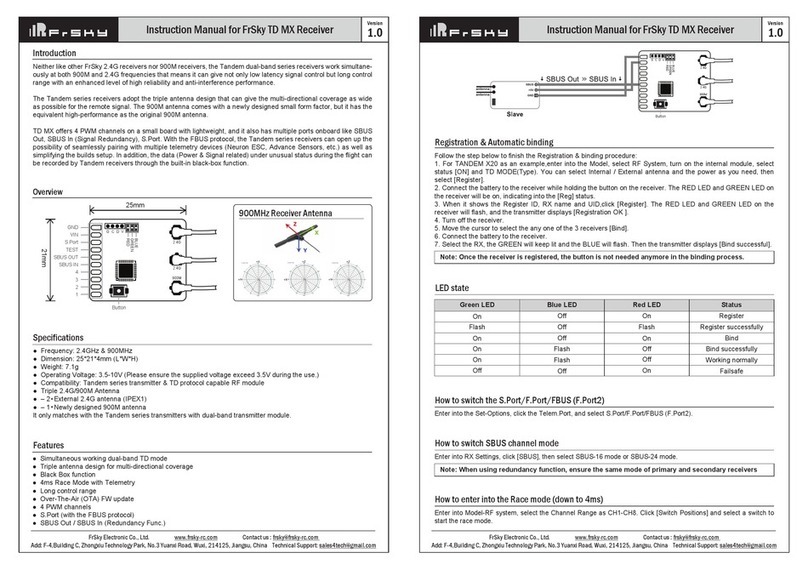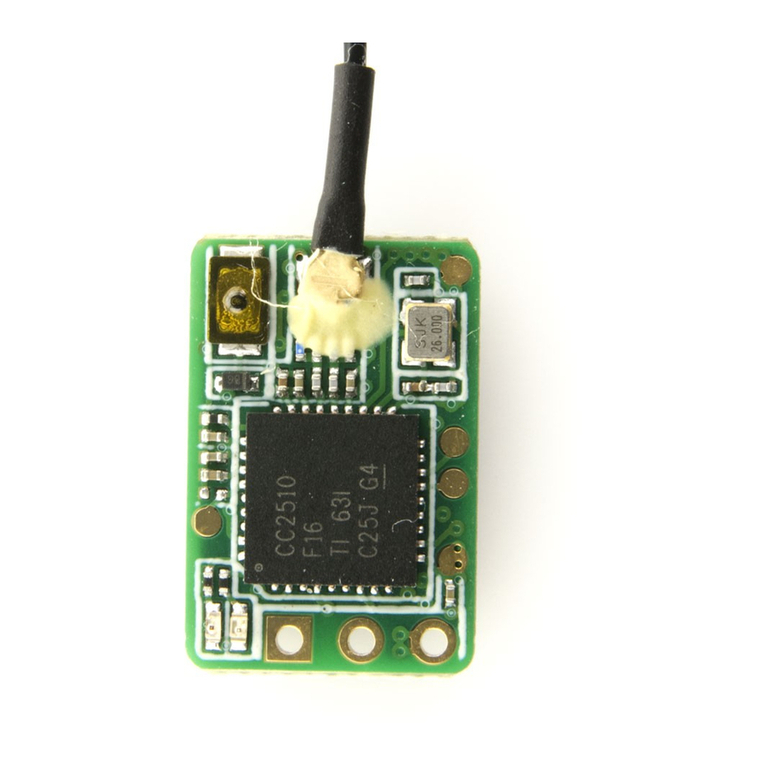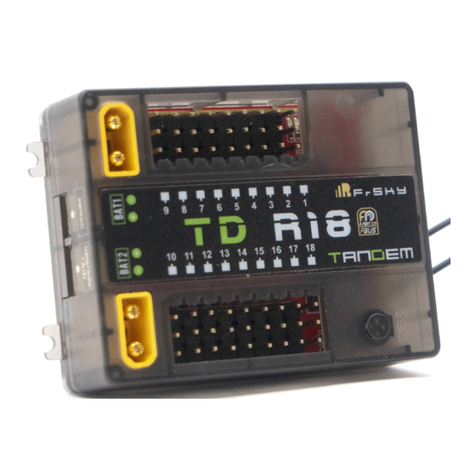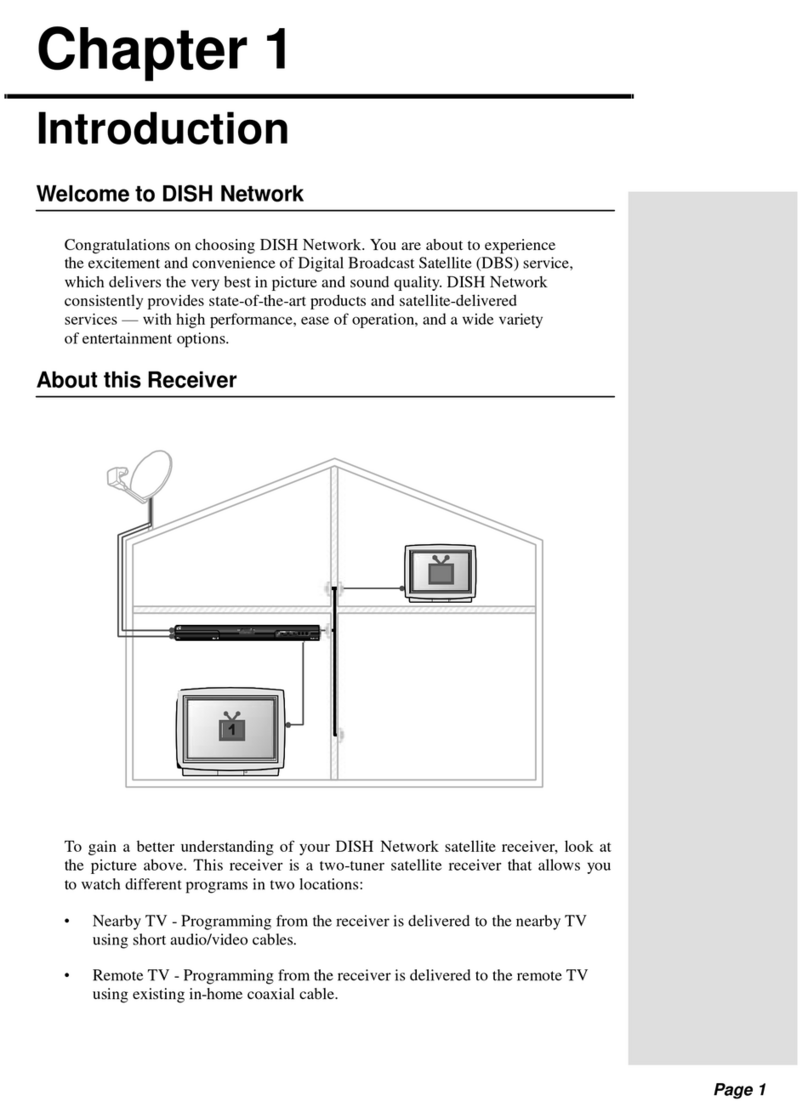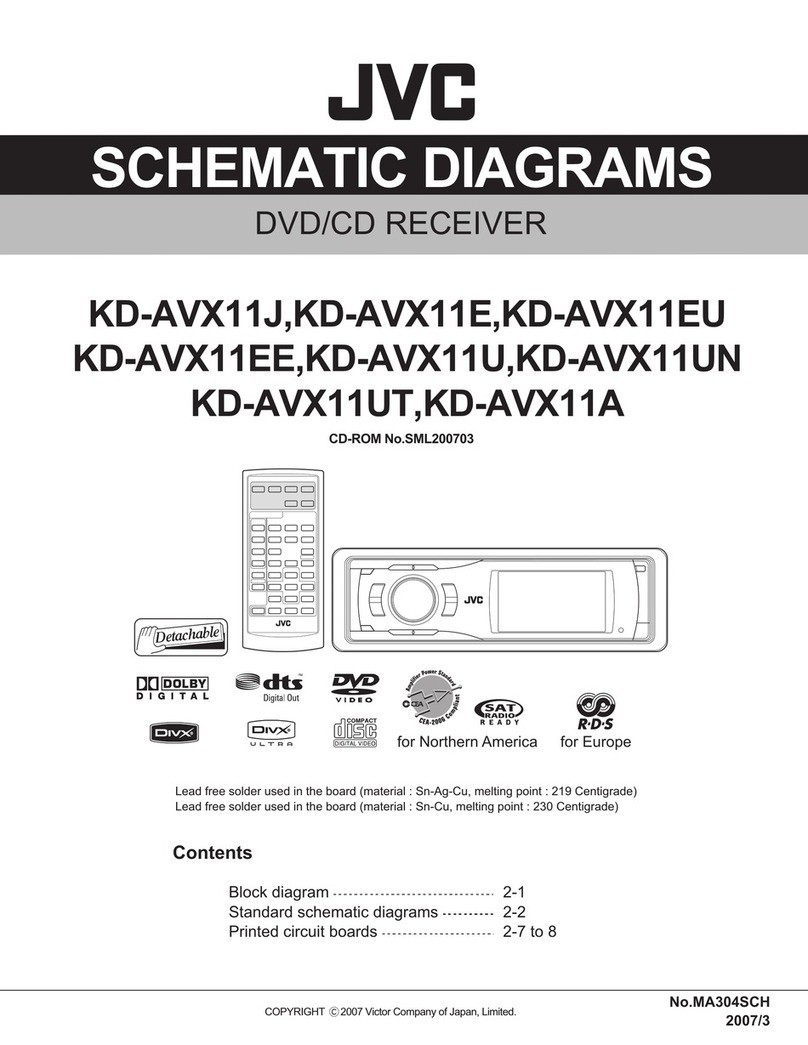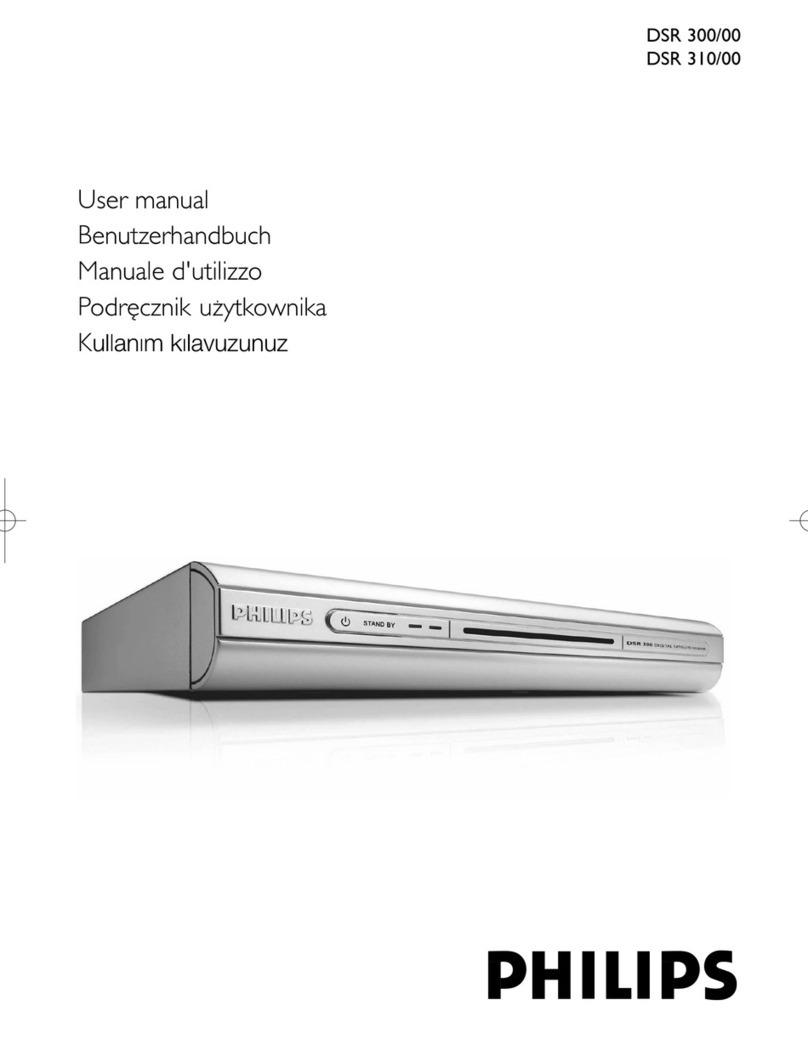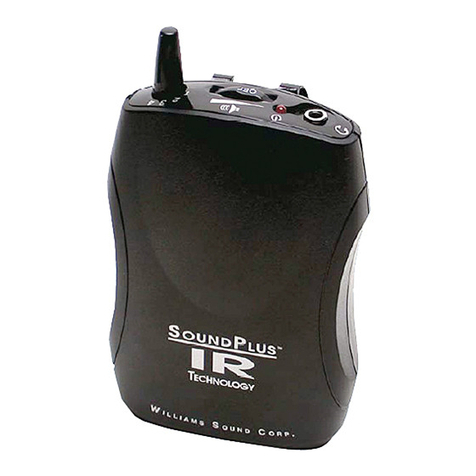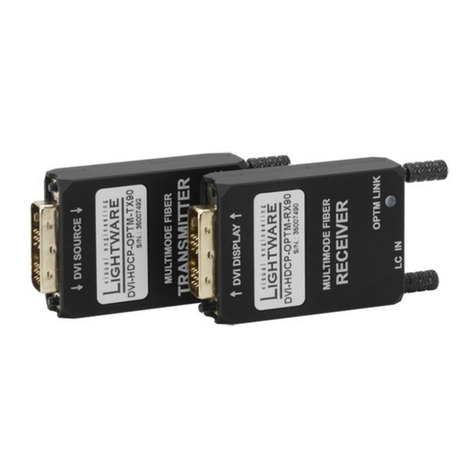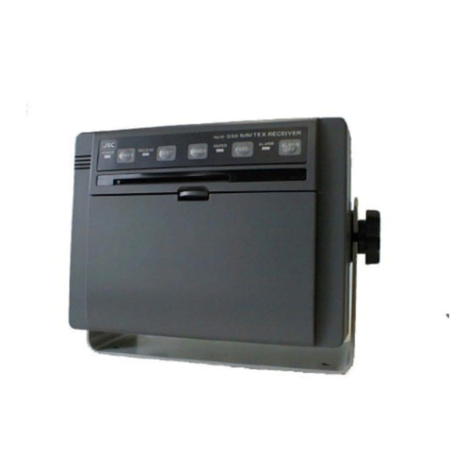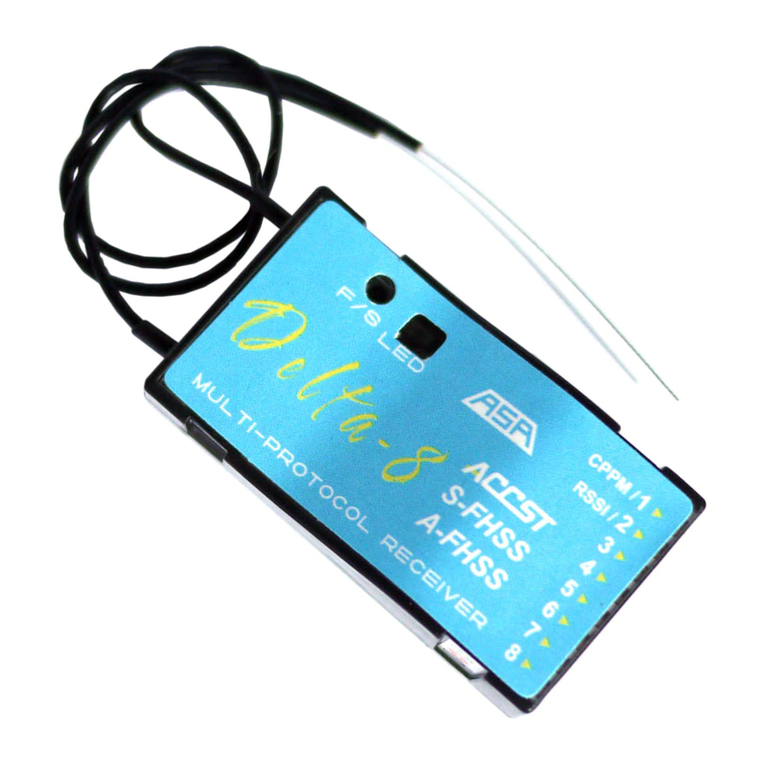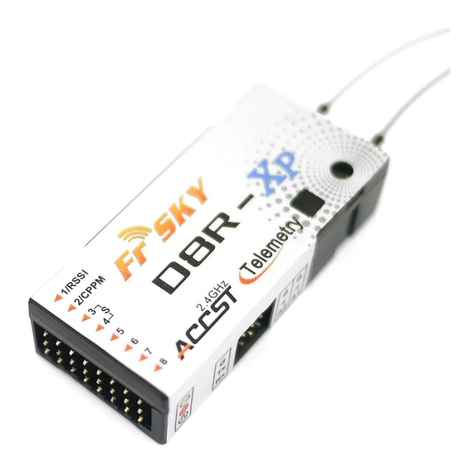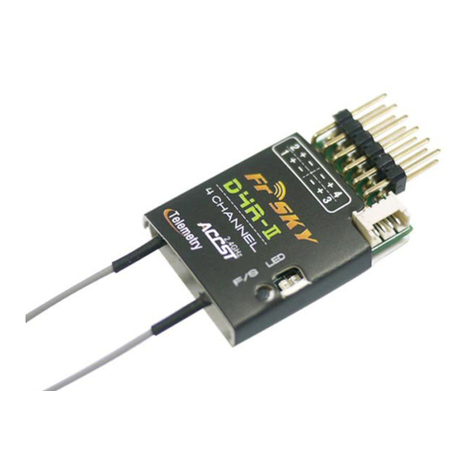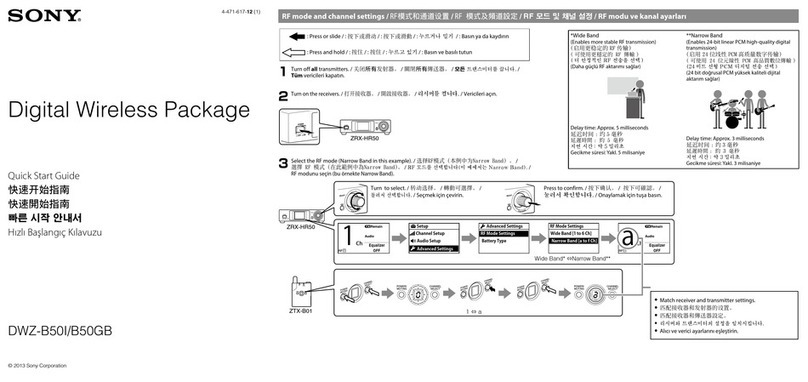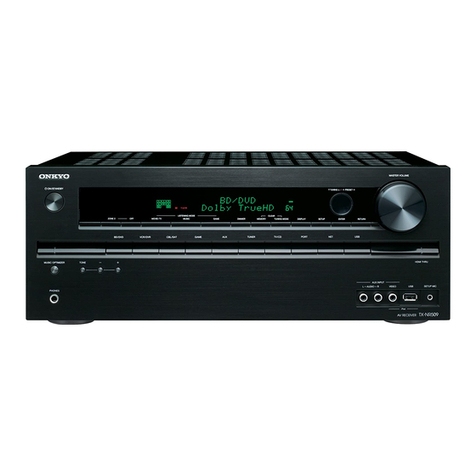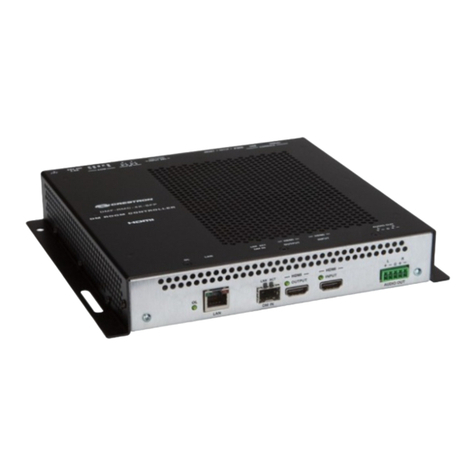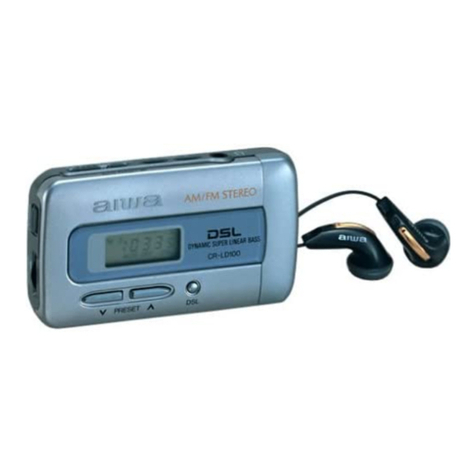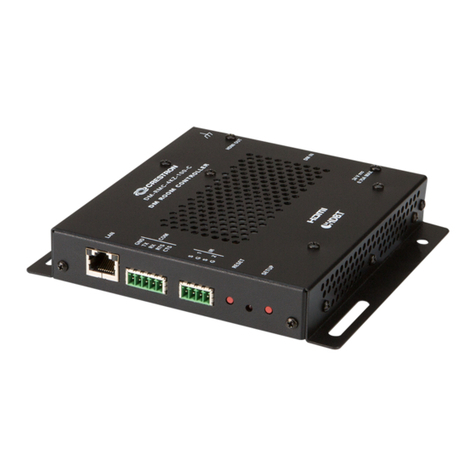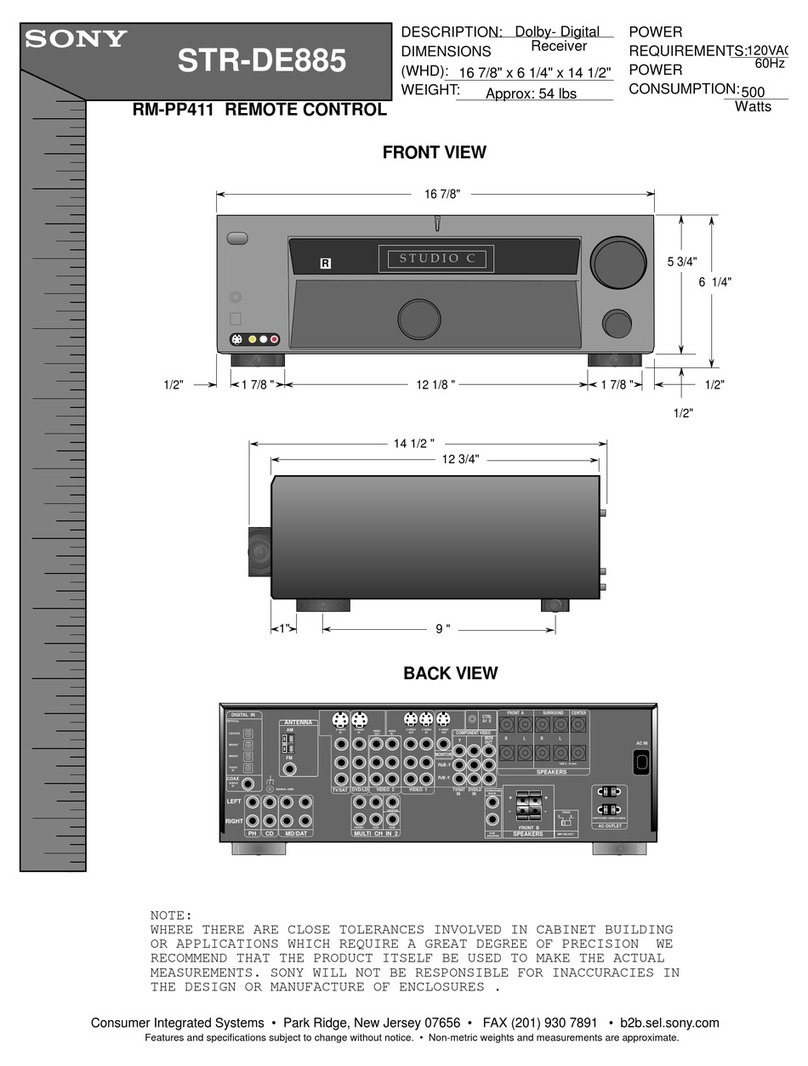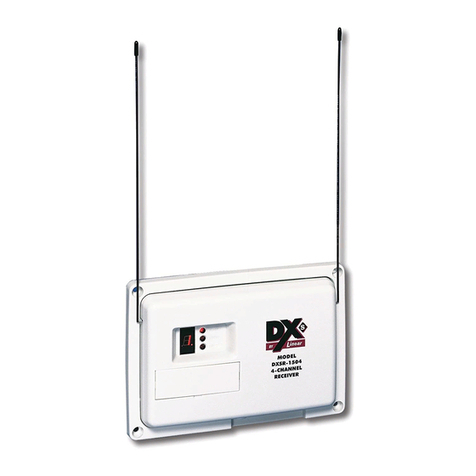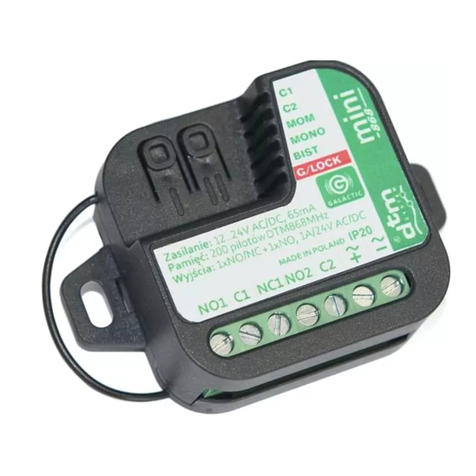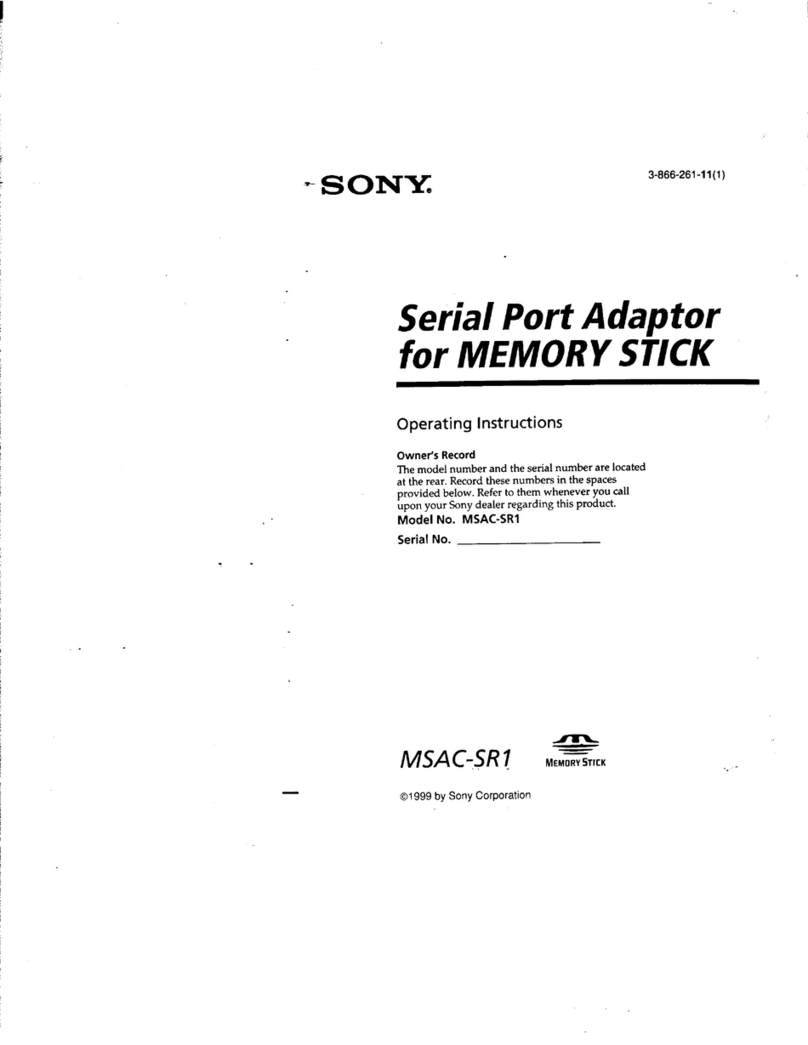FCC Statement
The product may be used freely in these countries: Germany, UK, France,Italy, Spain, Belgium, Netherlands,
Portugal, Greece, Ireland, Denmark, Luxembourg, Austria, Finland, Sweden, Norway and Iceland.
CE
FLYING SAFETY
Li-Ion Battery Safety and Handling instructions
IMPORTANT! The
Li-Ion
battery (NiMH) batteries included in the Horus X10 transmitter are not to be confused with
Li-Ion
batteries, or any other type of rechargeable battery (including NiCd and LiFe).
Li-Ion
batteries require special
charging criteria different than other rechargeable batteries. Use only the FrSky transmitter charger included with
this set for, or other chargers approved by FrSky, to charge the
Li-Ion
batteries in the HORUS X10 transmitter.
It’s important to understand the operating characteristics of Nickel–Metal Hydride battery (NiMH). Read the
specificationsprinted on the label of your NiMH battery and charger prior to use. Failure to follow the these
precautions can quickly result in severe, permanent damage to the battery and its surroundings and possibly result
in a FIRE!
FrSky is continuously adding features and improvements to our radio systems. Updating (via the pre-installed MicroSD
card in Horus X10 TF Card Slot) is easy and free. To get the most from your new transmitter, please check the download
section of the FrSky website www.frsky-rc.com, for the latest update firmware and how-to guide.
Horus X10 installed the FrSky FrTX operation system. Do not hesitate to contact FrSky if you have ideas and suggestions
for current and future radio systems, or if you are willing to join the FrSky developing union to be part of the projects.
﹡The currently pre-installed firmware of Horus X10 is FrSky FrTX firmware, developed and well tested by FrSky.
The transmitter also support the open source firmware.
Updates
Changes or modifications not expressly approved by the party responsible for compliance could void the
user's authority to operate the equipment.
This device complies with part 15 of the FCC Rules. Operation is subject to the following two conditions: (1)
This device may not cause harmful interference, and (2) this device must accept any interference received,
including interference that may cause undesired operation.
RF warning statement:
This equipment complies with FCC radiation exposure limits set forth for an uncontrolled environment .The
device has been evaluated to meet general RF exposure requirement. The device can be used in portable
exposure condition without restriction.
Where to Fly
We recommend that you fly at a recognized model airplane flying field. You can find model clubs and fields by
asking your nearest hobby dealer.
Always pay particular attention to the flying field’s rules, as well as the presence and location of spectators,
the wind direction, and any obstacles on the field. Be very careful flying in areas near power lines, tall buildings,
or communication facilities as there may be radio interference in their vicinity.
At the flying field
To prevent possible damage to your radio gear, turn the power switches on and off in the proper sequence:
1. Pull throttle stick to idle position, or otherwise disarm your motor/engine.
2. Turn on the transmitter power and allow your transmitter to reach its home screen.
3. Confirm the proper model memory has been selected.
4. Turn on your receiver power.
5. Test all controls. If a servo operates abnormally, don’t attempt to fly until you determine the cause of
the problem. (For PCM systems only: Test to ensure that the Failsafe settings are correct by waiting
at least 2 minutes after adjusting then, turning the transmitter off and confirming the proper surface/
throttle movements. Turn the transmitter back on.)
6. Start your engine.
7. Complete a full range check.
8. After flying, bring the throttle stick to idle position, engage any kill switches or otherwise disarm your
motor/engine.
If you do not turn on your system on and off in this order, you may damage your servos or control surfaces,
flood your engine, or in the case of electric-powered or gasoline-powered models, the engine may unexpectedly
turn on and cause a severe injury.
Make sure your transmitter can’t tip it over. If it is knocked over, the throttle stick may be accidentally
moved, causing the engine to speed up. Also, damage to your transmitter may occur.
In order to maintain complete control of your aircraft it is important that it remains visible at all times. Flying
behind large objects such as buildings, grain bins, etc. must be avoided. Doing so may interrupt the radio
frequency link to the model, resulting in loss of control.
Do not grasp the transmitter's antenna during flight. Doing so may degrade the quality of the radio frequency
transmission and could result in loss of control.
As with all radio frequency transmissions, the strongest area of signal transmission is from the sides of the
transmitter's antenna. As such, the antenna should not be pointed directly at the model. If your flying style
creates this situation, easily move the antenna to correct this situation
Before taxiing, be sure to extend the transmitter antenna to its full length.
A collapsed antenna will reduce your flying range and cause a loss of control. It is a good idea to avoid pointing
the transmitter antenna directly at the model, since the signal is weakest in that direction.
Don’t fly in the rain! Water or moisture may enter the transmitter through the antenna or stick openings
and cause erratic operation or loss of control. If you must fly in wet weather during a contest, be sure to cover
your transmitter with a plastic bag or waterproof barrier. Never fly if lightning is expected.
Warning:
To ensure the safety of yourself and others, please observe the following precautions.
Have regular maintenance performed. Although your Horus X10 protects the model memories with
non-volatile EEPROM memory (which does not require periodic replacement) and of a battery, it still should have
regular check-ups for wear and tear. We recommend sending your system to your FrSky Service Center annually
during your non-flying-season for a complete check-up and service.
Battery
Charge the batteries! Using the standard Horus battery and charger, always recharge the transmitter and
receiver batteries for at least 8 hours before each flying session. A low battery will soon die, causing loss of control
and a crash. When you begin your flying session, reset your transmitter’s built-in timer, and during the session
pay attention to the duration of usage. Also, if your model uses a separate receiver battery, make sure it is fully
charged before each flying session.
Stop flying long before your batteries become low on charge. Do not rely on your radio’s low battery
warning systems, intended only as a precaution, to tell you when to recharge. Always check your transmitter
and receiver batteries prior to each flight.
Do not leave a
Li-Ion
battery unattended at any time while being charged or discharged.
Do not attempt to charge
Li-Ion
batteries with a charger that is NOT designed for NiMH batteries, as permanent
damage to the battery and charger could result.
Always charge
Li-Ion
batteries in a fireproof location. Do not charge or discharge
Li-Ion
batteries on carpet, a
cluttered workbench, near paper, plastic, vinyl, leather or wood, or inside an R/C model or full-sized automobile!
Monitor the charge area with a smoke or fire alarm.
Do not charge NiMH batteries at currents greater than the “1C” rating of the battery (“C” equals the rated capacity
of the battery).
Do not allow
Li-Ion
cells to overheat at any time! Cells which reach greater than 140 degrees Fahrenheit (60°C)
should be placed in a fireproof location.
Li-Ion
cells will not charge fully when too cold or show full charge.
It is normal for the batteries to become warm during charging, but if the charger or battery becomes excessively
hot disconnect the battery from the charger immediately!! Always inspect for potential damage any battery
which has previously overheated for potential damage, and do not re-use if you suspect it has been damaged
in any way.
Do not use a
Li-Ion
battery if you suspect physical damage has occurred to the pack. Carefully inspect the
battery for even the smallest of dents, cracks, splits, punctures or damage to the wiring and connectors. DO
NOT allow the battery’s internal electrolyte to get into eyes or on skin—wash affected areas immediately if they
come in.
IMPORTANT PRECAUTIONS
Add:F-4,Building
C,
Zhongxiu
Technology
Park,
No.3
Yuanxi
Road,
Wuxi,
214125,
Jiangsu,
China
Technical
Support:
[email protected] Add:F-4,Building
C,
Zhongxiu
Technology
Park,
No.3
Yuanxi
Road,
Wuxi,
214125,
Jiangsu,
China
Technical
Support:
[email protected] Add:F-4,Building
C,
Zhongxiu
Technology
Park,
No.3
Yuanxi
Road,
Wuxi,
214125,
Jiangsu,
China
Technical
Support:
[email protected] 


